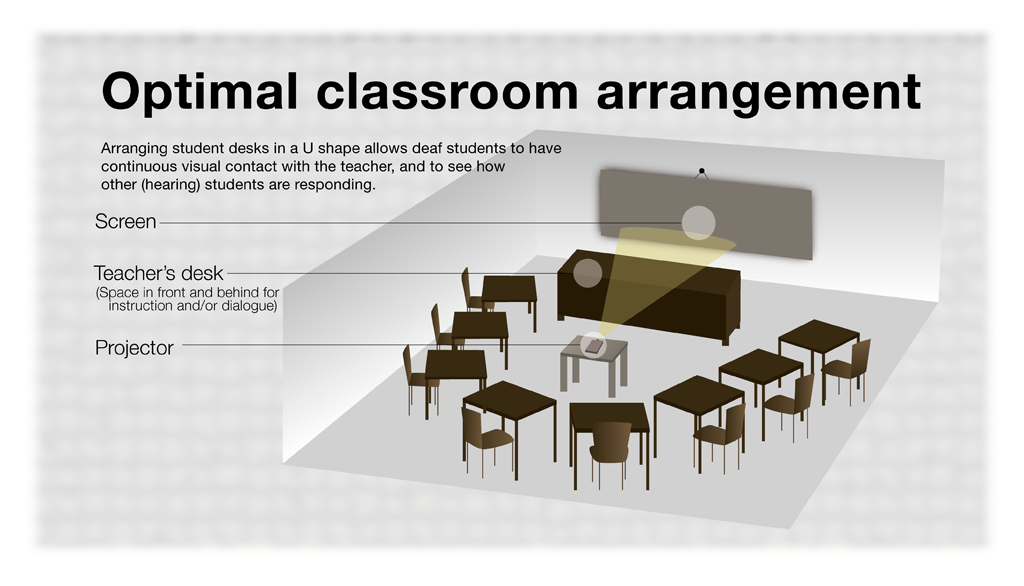27
Every student faces challenges when learning at school, be that big or minor, but for a student with hearing loss, the number of challenges they face is even greater. Fortunately, there are many ways teachers can accommodate a child’s needs in order for him or her to overcome their difficulties and reach their full potential. It is always a good idea to discuss the options on accommodating the child’s needs during school meetings or parent-teacher conferences, so everyone involved in the child’s learning is on board (Earq, n.d.)
Introduce the topic in class
One of the things the teacher can do in the classroom is to let the student with hearing loss or a hearing impairment give a presentation about their hearing impairment. Let them explain some issues they face during lessons or challenges they face with their peers. This can cause for a better understanding with their peers.
Find ways to communicate more effectively
The teacher should face the student when talking, so the student can clearly see the teacher’s face and understand much more of what is being said. Don’t talk while turned away from the student, for example when writing on the board or when walking around the classroom. The teacher can use facial expressions or body language to highlight points when needed. Nonverbal cues can help the student with their comprehension. Also, sometimes it helps to point to the student who is talking, so the student with hearing impairment or hearing loss can look in the right direction. If possible, arrange the tables or desks in a large circle so the student is able to see everyone and even respond to others in class. This is able to help in making the student feel included and engaged, even if he or she is not being able to hear what is being said. Another thing that can help is repeating what is being asked or answered and sum up what has been told.
Sometimes it can be efficient to include the student more prominently by asking for his/her opinion. However, don’t exaggerate or overdo this as most children don’t like being the center of attention. One more thing the teacher can do is to give the student a handout of notes so he or she does not have to concentrate on writing when trying to listen. A school buddy can also be a good idea for the student with hearing loss or a hearing impairment, the buddy can take notes and listen carefully and when the student missed anything or wants something to be repeated their buddy can help.
Reduce background noise as much as possible
For students with a hearing impairment to work efficiently, there should be as little background noise as possible. Close classroom doors whenever possible in order to diminish noises from the hallway. This is also something that will help more students with their learning. Chairs, tables and desks can oftentimes be noisy when students are moving around, putting tennis balls on the legs of those chairs, tables and desks can be of great value to diminish the noise (Earq, n.d.).
Did you know?
Soft materials like curtains, carpeting or rugs better the classroom’s acoustics. This will absorb many more incidental sounds that would otherwise be distracting.

